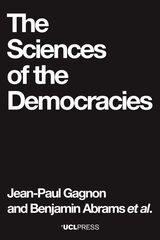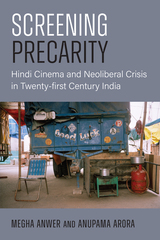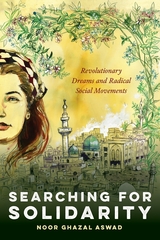
The advance of trade unionism in the first part of the twentieth century to a dominant place in the American economy brought with it a major change in the life of the nation. This phenomenal growth has not hitherto been adequately studied. This is the first book to deal with the actual process of unionization. David Brody presents here a detailed study of one industry—meat packing and retailing—with implications that apply to unionization in general. Working almost entirely from primary sources, he has had access to the files of both the AFL and CIO unions in the industry.
In this new approach to American labor history, Mr. Brody describes how and when the butcher workmen were organized, how their unions attained internal stability, and how genuine collective bargaining was finally achieved. In attempting to explain why the process developed as it did, he examines union tactics and employer opposition, industry characteristics and the effects of change in the industry. He also pays close attention to the alteration of the power balance brought about by the influence and legislation of the New Deal.
Mr. Brody’s story has two main strands. The more dramatic one concerns the meat-packing branch of the industry. Here the AFL union twice captured the great packing centers and twice lost them in climatic strikes in 1904 and 1921. It was not until World War II, after the advent of the CIO and the New Deal, that organization was finally secure. On the retail side unionization proceeded more quietly with comparatively little progress until the 1930s. The entry of the huge grocery chains such as A & P and Safeway, into the meat field then made this part of the industry accessible to organization.
The study of this particular industry illuminates the larger process of unionization. The meat trade as a whole had the characteristics not only of mass-production industry but also those of small scale, local, skilled labor operations that attracted AFL unions of the old line. Also, the unions of the old line. Also, the unions actually involved provide excellent examples of the rival approaches if the AFL and the CIO to the challenge of unionization. What emerges from the book is the complexity of the phenomenon of unionization. The process covered much more than the recruitment of members, and the causes sprang from a variety of elements, changing in importance at different times and places.

The English Language Common Law Workbook is designed to support students in developing the core competencies necessary for studying in a common law context. It provides readings and exercises based on authentic legal materials for practicing critical reading and writing skills. In particular, it includes an extensive number of statutes and cases and accompanying exercises that give students an opportunity to work with the type of sources they will encounter in English-medium law degree programs. By emphasizing common law principles throughout, the book helps international students coming from non–common law jurisdictions familiarize themselves with how statutes and cases in common law countries are written and structured. Students are supported in critically reading statutes and cases by focusing on key terminology and language structures. Finally, the book supports students in applying the skills they learn to construct basic case briefs and answer hypothetical legal questions using the IRAC structure.
CEFR Levels: B2–C2
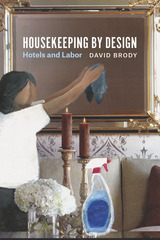
With Housekeeping by Design, David Brody introduces us to those people—the housekeepers whose labor keeps the rooms clean and the guests happy. Through unprecedented access to staff at several hotels, Brody shows us just how much work goes on behind the scenes—and how much management goes out of its way to make sure that labor stays hidden. We see the incredible amount of hard physical work that is involved in cleaning and preparing a room, how spaces, furniture, and other objects are designed to facilitate a smooth flow of hidden labor, and, crucially, how that design could be improved for workers and management alike if front-line staff were involved in the design process. After reading this fascinating exposé of the ways hotels work—or don’t for housekeepers—one thing is certain: checking in will never be the same again.

Widely regarded as a failure, the great 1919 steel strike had both immediate and far-reaching consequences that are important to the history of American labor. It helped end the twelve-hour day, dramatized the issues of the rights to organize and to engage in collective bargaining, and forwarded progress toward the passage of the Wagner Act, which, in turn, helped trigger John L. Lewis's decision to launch the CIO.

as well as a symposium on the book in which seven prominent historians
discuss its significance and its place in the historiography of labor.
"Steelworkers in America has emerged and remained one of
the few genuinely classic works of U.S. labor history--one of the axiomatic
starting points for any understanding of the new labor history."
-- Roy Rosenzweig
"The vision of Steelworkers has survived these thirty years
and continues to inspire new work in labor history." -- Lizabeth
Cohen

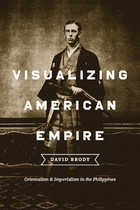
In 1899 an American could open a newspaper and find outrageous images, such as an American soldier being injected with leprosy by Filipino insurgents. These kinds of hyperbolic accounts, David Brody argues in this illuminating book, were just one element of the visual and material culture that played an integral role in debates about empire in late nineteenth- and early twentieth-century America.
Visualizing American Empire explores the ways visual imagery and design shaped the political and cultural landscape. Drawing on a myriad of sources—including photographs, tattoos, the decorative arts, the popular press, maps, parades, and material from world’s fairs and urban planners—Brody offers a distinctive perspective on American imperialism. Exploring the period leading up to the Spanish-American War, as well as beyond it, Brody argues that the way Americans visualized the Orient greatly influenced the fantasies of colonial domestication that would play out in the Philippines. Throughout, Brody insightfully examines visual culture’s integral role in the machinery that runs the colonial engine. The result is essential reading for anyone interested in the history of the United States, art, design, or empire.
READERS
Browse our collection.
PUBLISHERS
See BiblioVault's publisher services.
STUDENT SERVICES
Files for college accessibility offices.
UChicago Accessibility Resources
home | accessibility | search | about | contact us
BiblioVault ® 2001 - 2025
The University of Chicago Press



